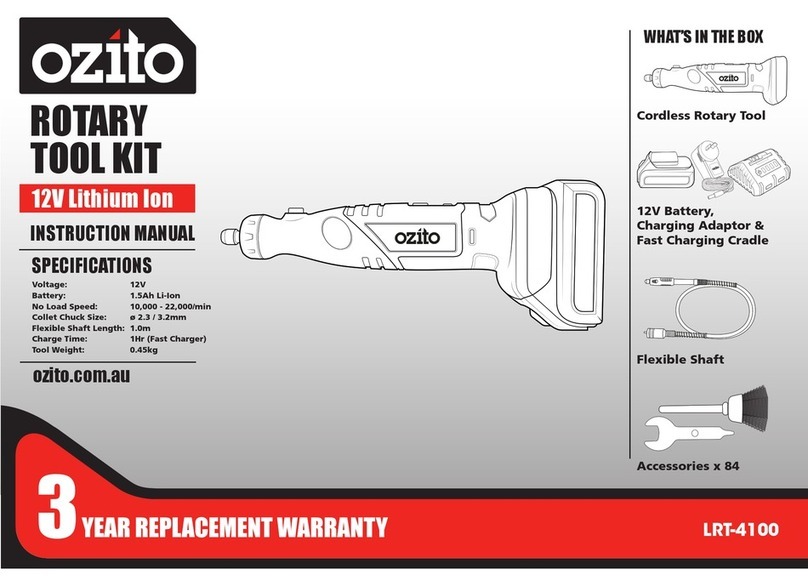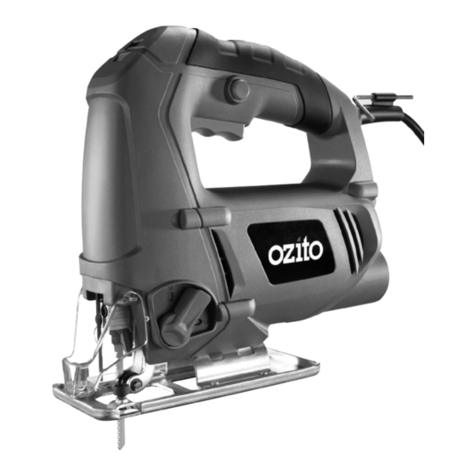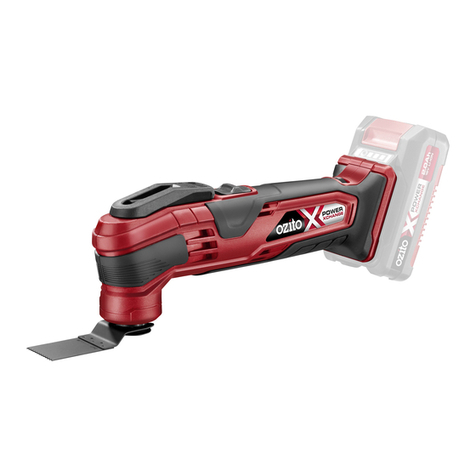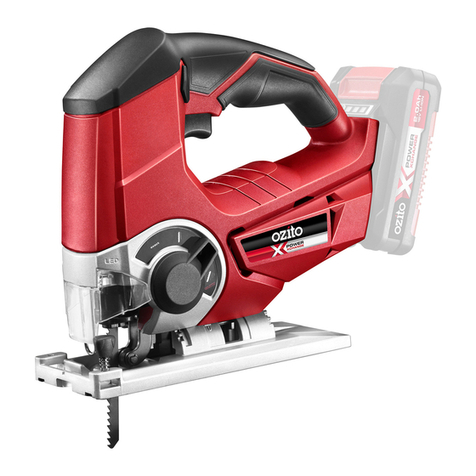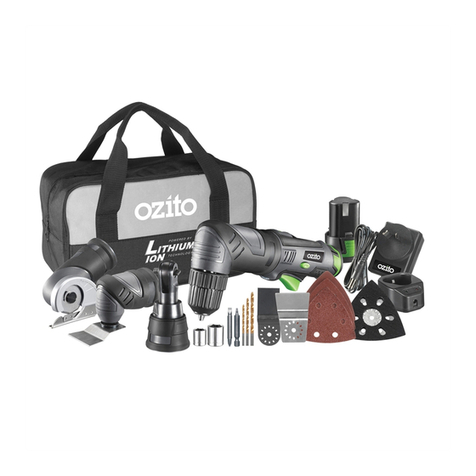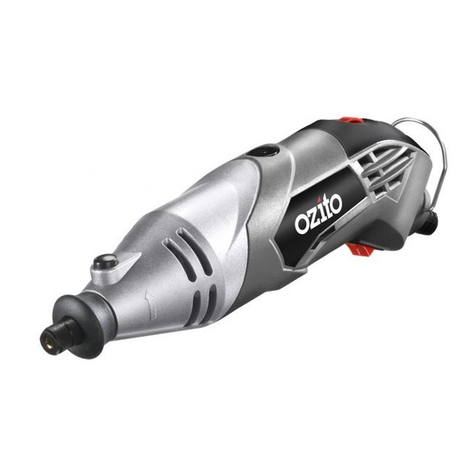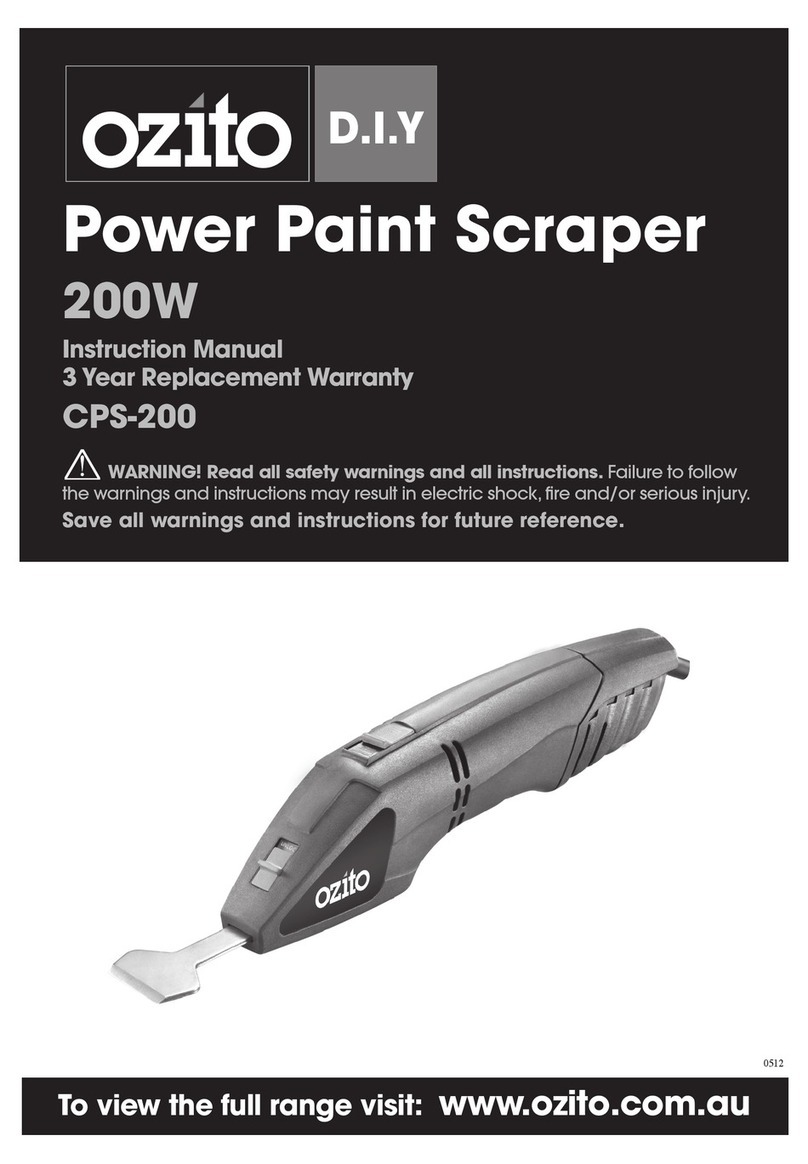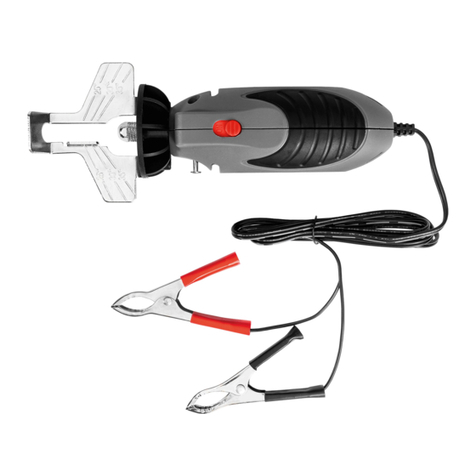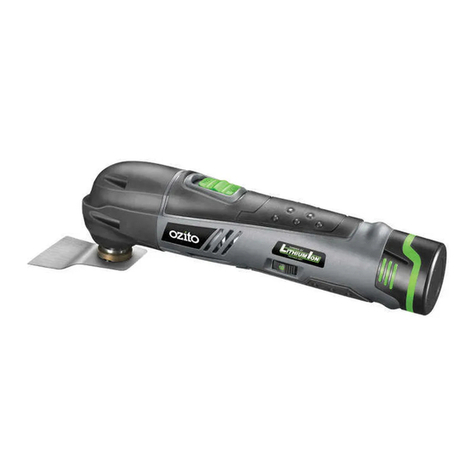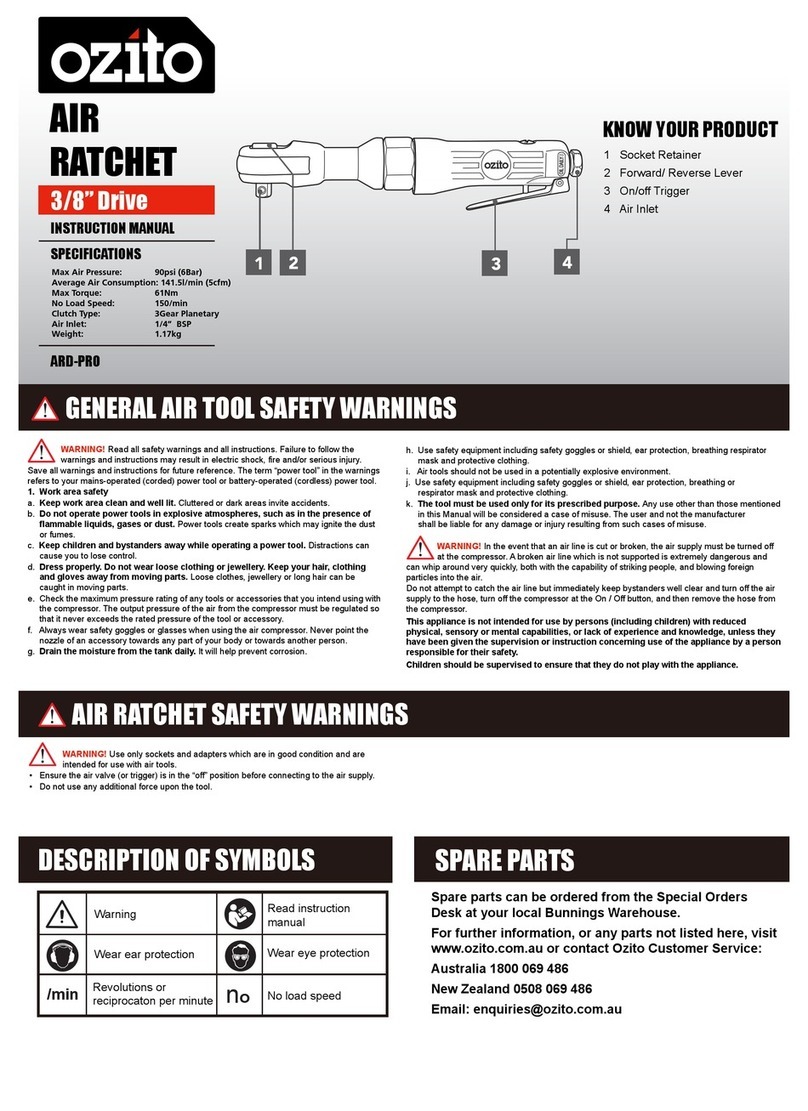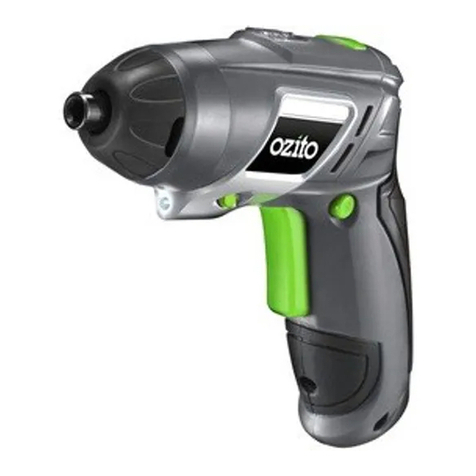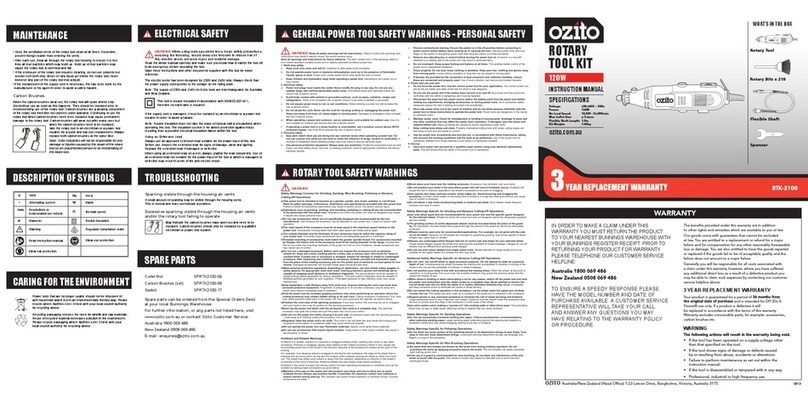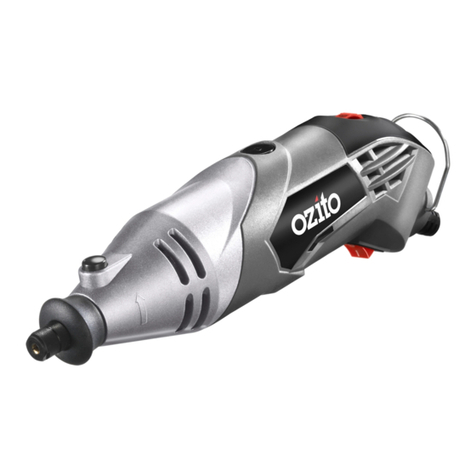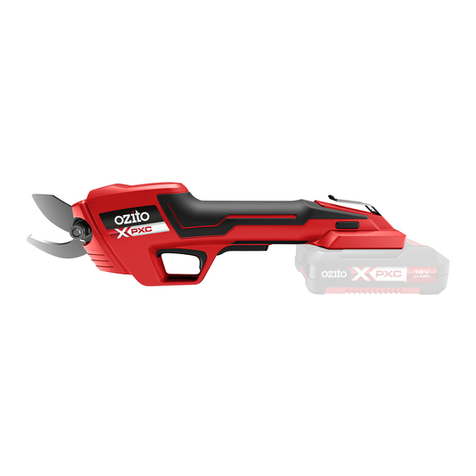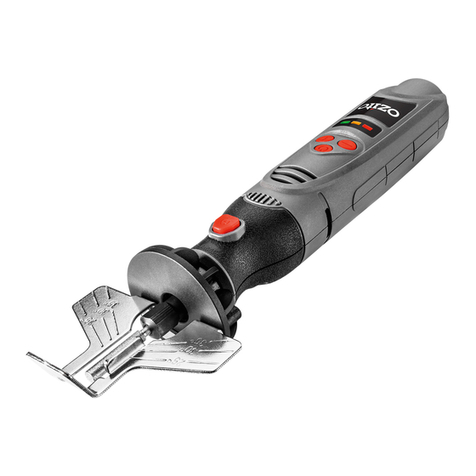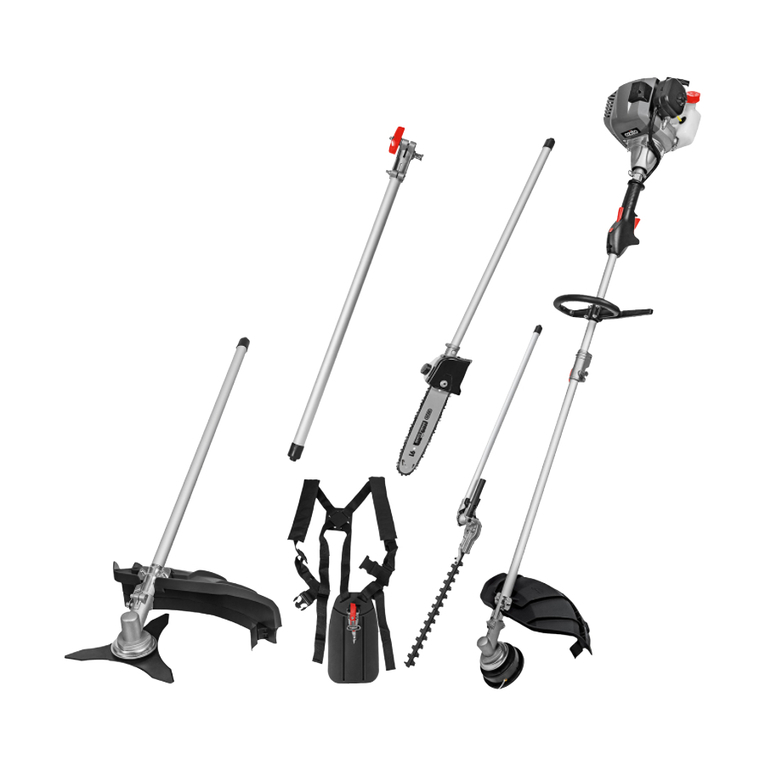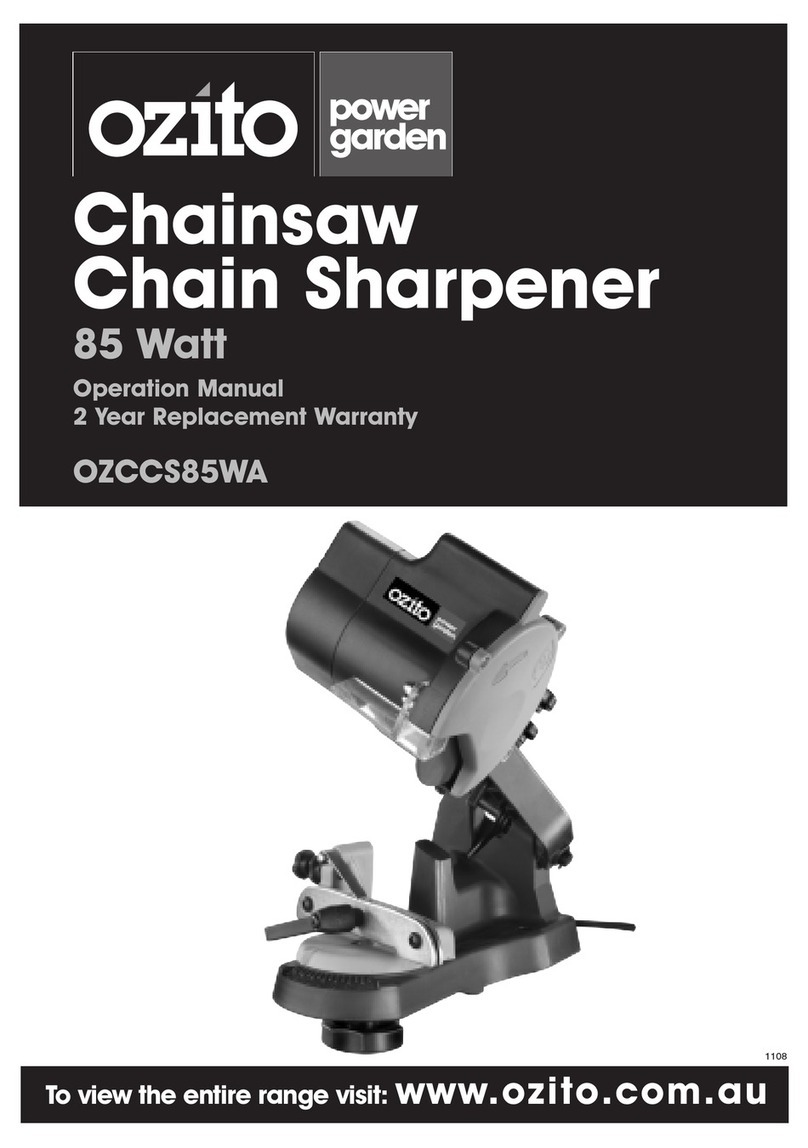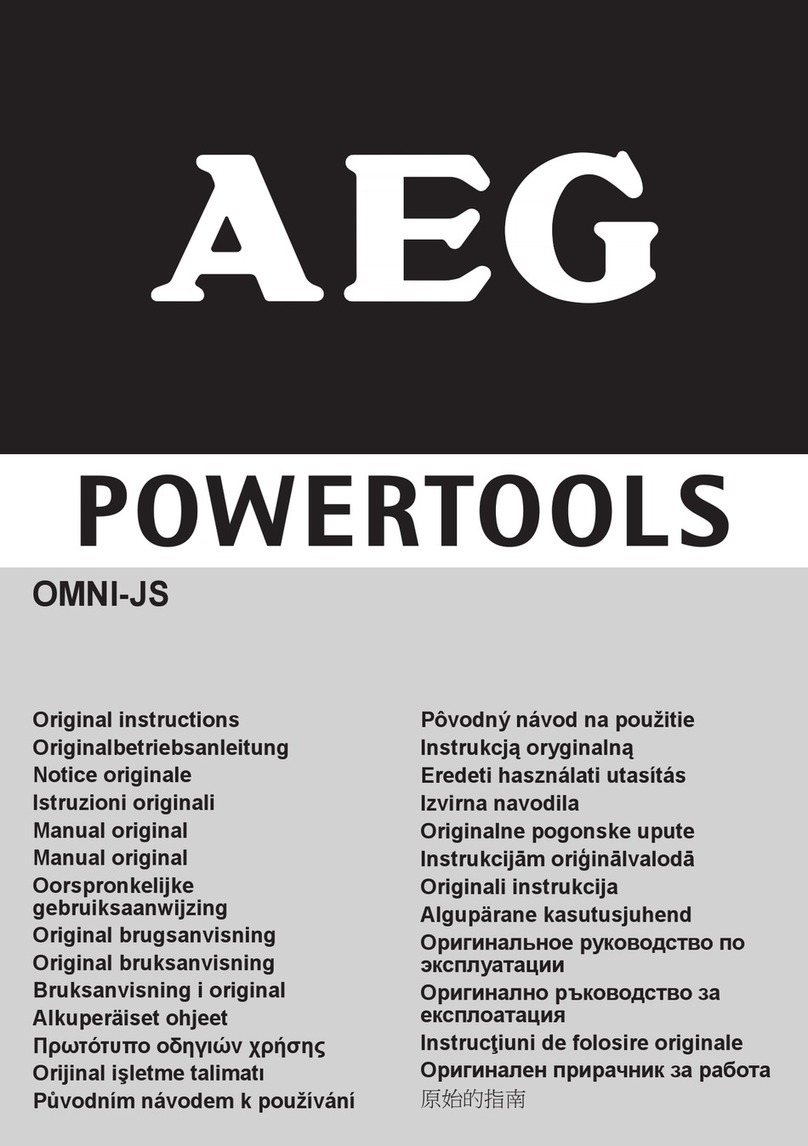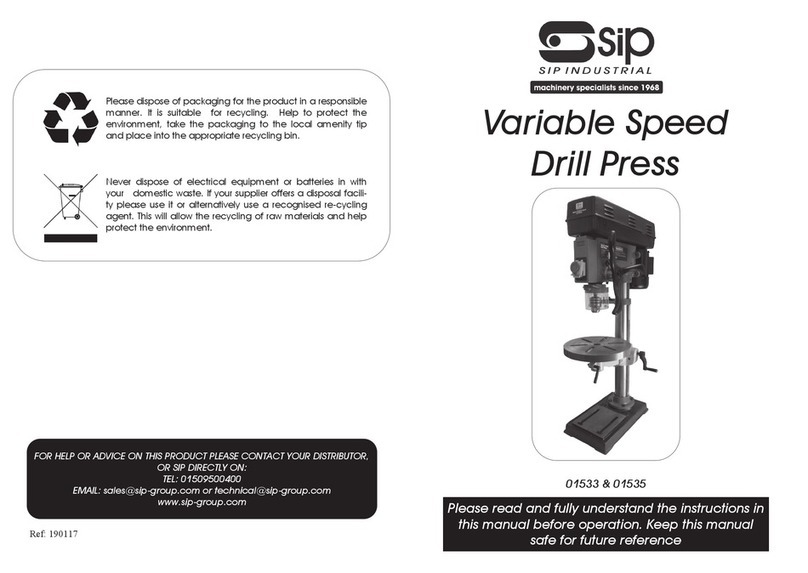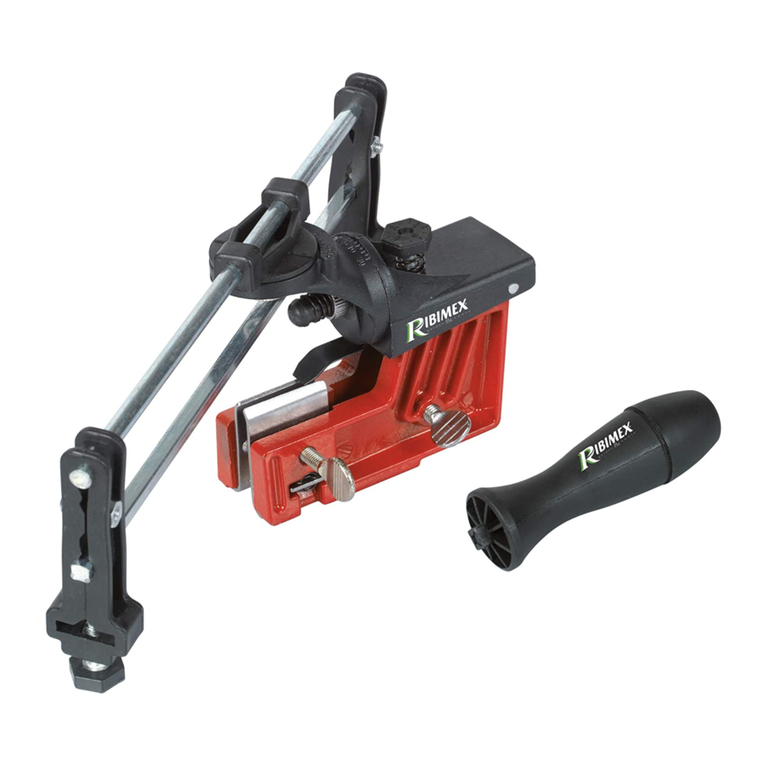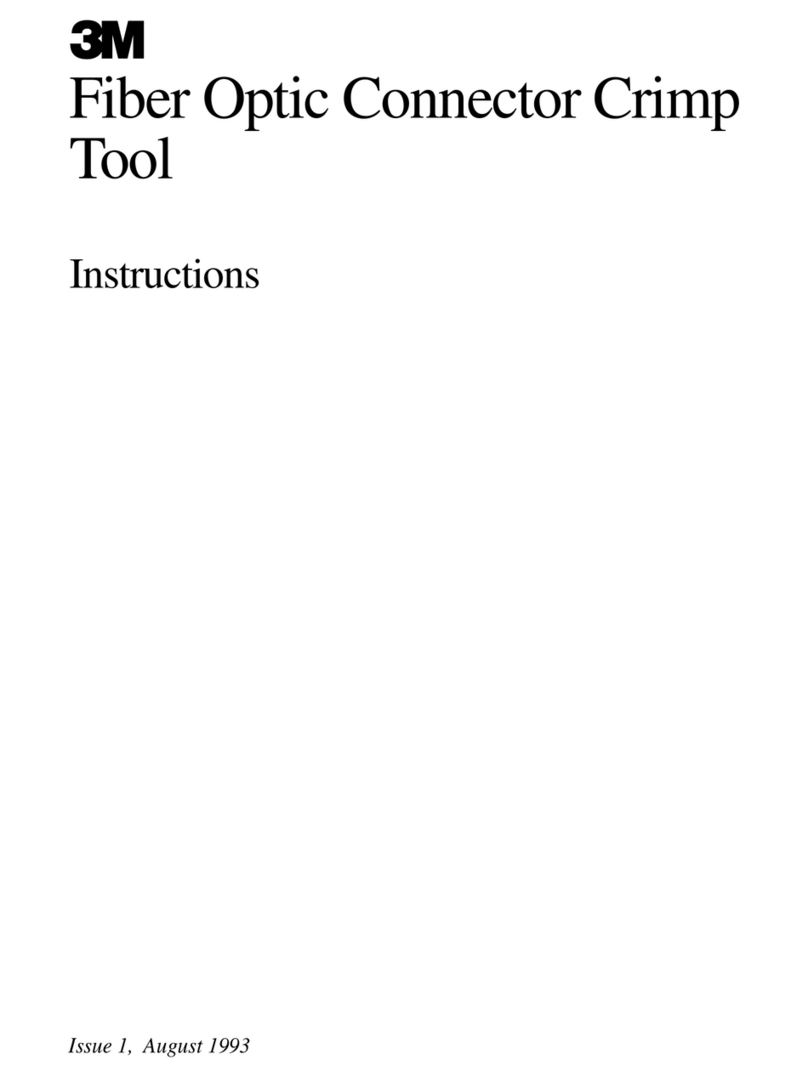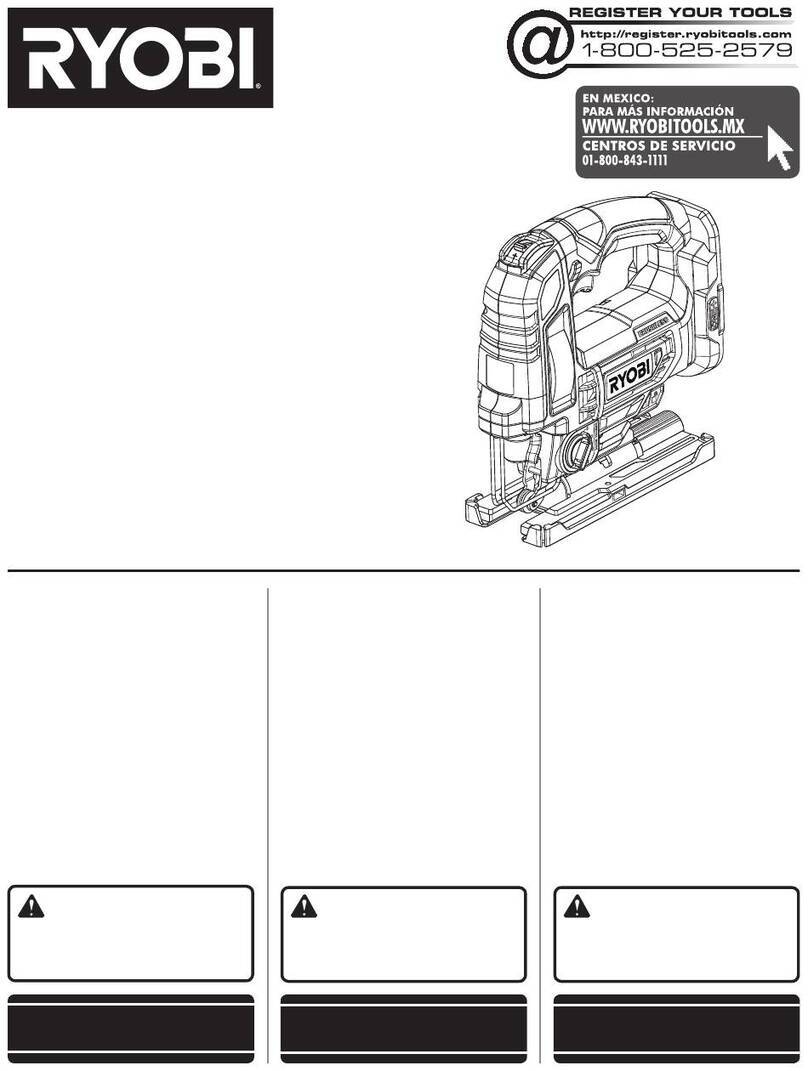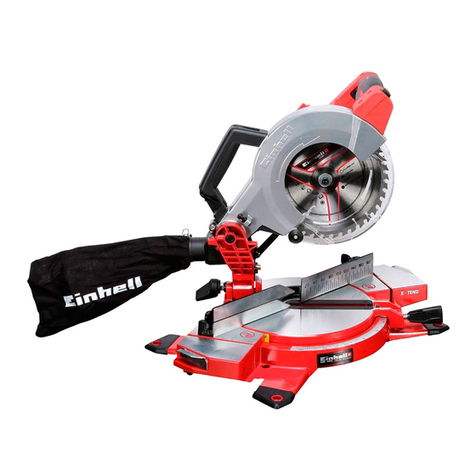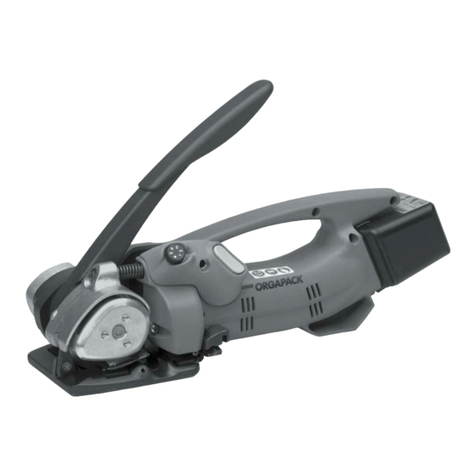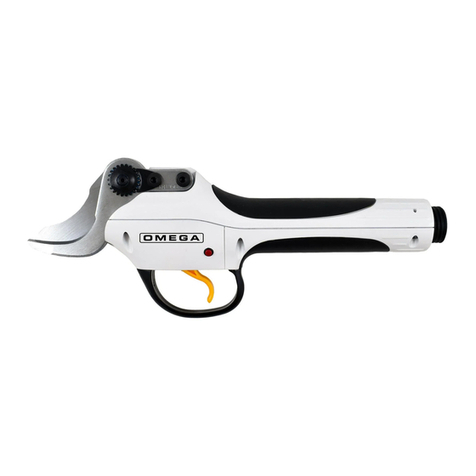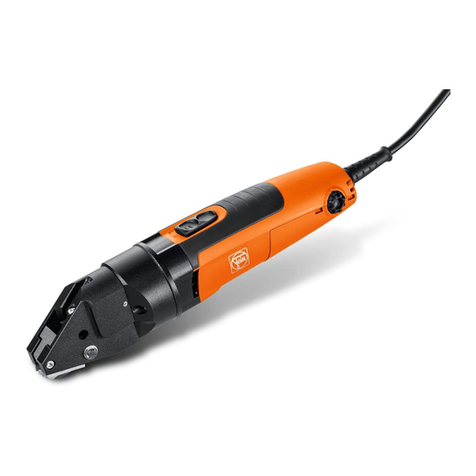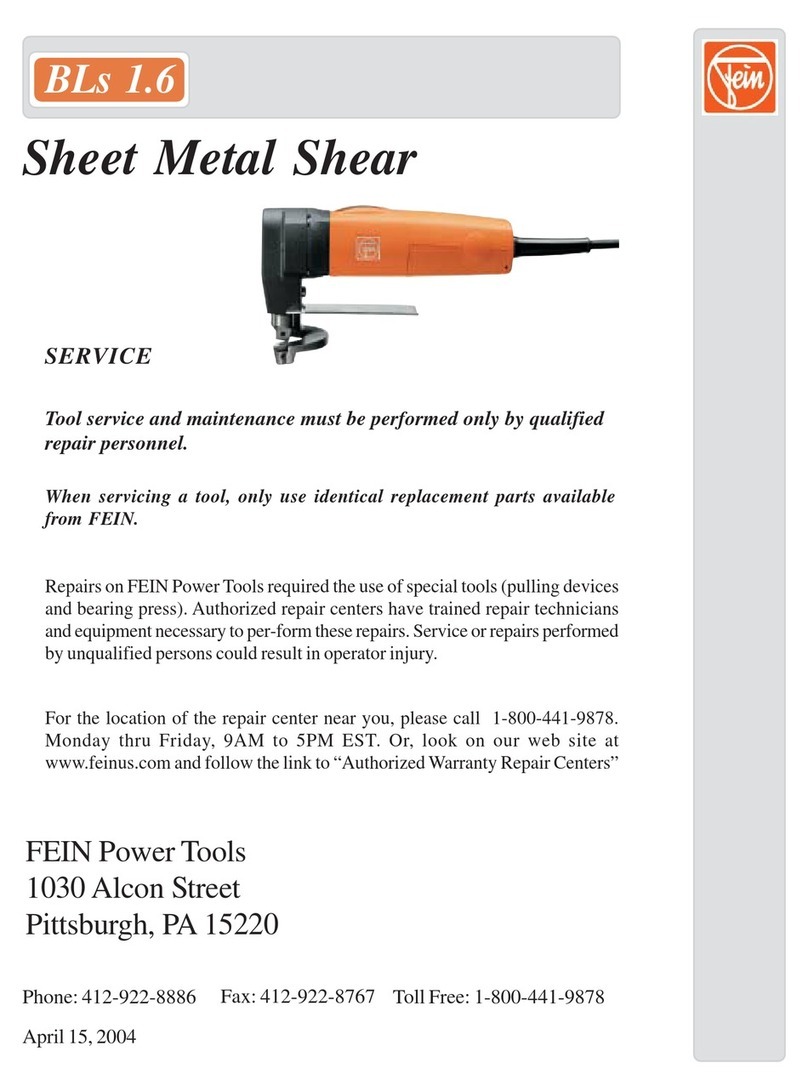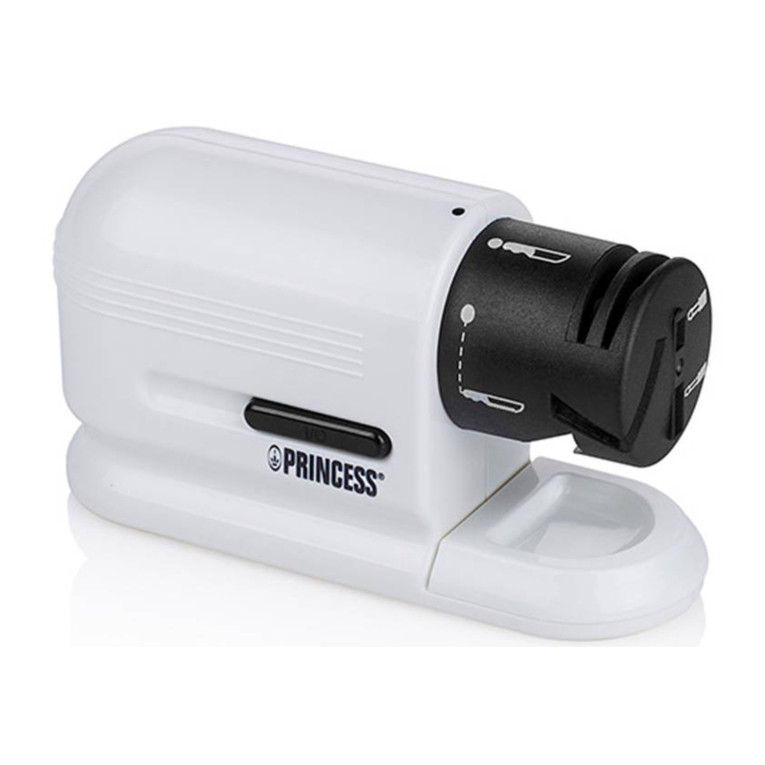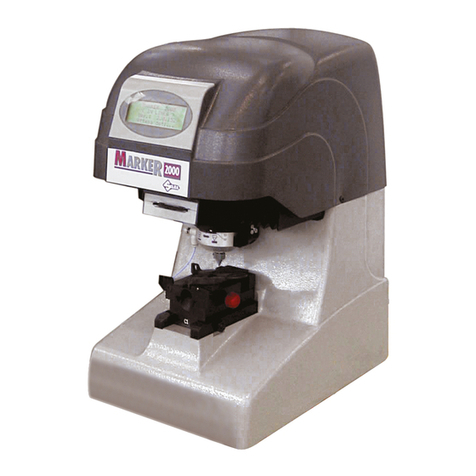This appliance is not intended for use by young or inrm persons unless supervised by a responsible
person to ensure that they can use the appliance safely. Young children should be supervised to
ensure that they do not play with the appliance.
WARNING!
Safety Warnings Common for Grinding, Sanding, Wire Brushing, Polishing or Abrasive
Cutting-Off Operations:
a)This power tool is intended to function as a grinder, sander, wire brush, polisher or cut-off tool. Read all
safety warnings, instructions, illustrations and specications provided with this power tool. Failure to follow all
instructions listed below may result in electric shock, re and/or serious injury.
b)Operations for which the power tool was not designed may create a hazard and cause personal injury.
c) Do not use accessories which are not specically designed and recommended by the tool manufacturer. Just
because the accessory can be attached to your power tool, it does not assure safe operation.
d)The rated speed of the accessory must be at least equal to the maximum speed marked on the power tool.
Accessories running faster than their rated speed can break and y apart.
e)The outside diameter and the thickness of your accessory must be within the capacity rating of your power
tool. Incorrectly sized accessories cannot be adequately guarded or controlled.
f) The arbour size of wheels, sanding drums or any other accessory must properly t the spindle or collet of the
power tool. Accessories that do not match the mounting hardware of the power tool will run out of balance, vibrate
excessively and may cause loss of control.
g)Mandrel mounted wheels, sanding drums, cutters or other accessories must be fully inserted into the collet
or chuck. If the mandrel is insufciently held and/or the overhang of the wheel is too long, the mounted wheel may
become loose and be ejected at high velocity.
h)Do not use a damaged accessory. Before each use inspect the accessory such as abrasive wheels for chips
and cracks, backing pad for cracks, tear or excess wear, wire brush for loose or cracked wires. If power
tool or accessory is dropped, inspect for damage or install an undamaged accessory. After inspecting and
installing an accessory, position yourself and bystanders away from the plane of the rotating accessory and
run the power tool at maximum no-load speed for one minute. Damaged accessories will normally break apart
during this test time.
i)Wear personal protective equipment. Depending on application, use face shield, safety goggles or safety
glasses. As appropriate, wear dust mask, hearing protectors, gloves and workshop apron capable of stopping
small abrasive or workpiece fragments. The eye protection must be capable of stopping ying debris generated by
various operations . The dust mask or respirator must be capable of ltrating particles generated by your operation.
Prolonged exposure to high intensity noise may cause hearing loss.
j)Keep bystanders a safe distance away from work area. Anyone entering the work area must wear personal
protective equipment. Fragments of workpiece or of a broken accessory may y away and cause injury beyond
immediate area of operation.
k)Hold the power tool by insulated gripping surfaces only, when performing an operation where the cutting
accessory may contact hidden wiring or its own cord. Cutting accessory contacting a “live” wire may make
exposed metal parts of the power tool “live” and could give the operator an electric shock.
l) Always hold the tool rmly in your hand(s) during the start-up. The reaction torque of the motor, as it accelerates
to full speed, can cause the tool to twist.
m)Use clamps to support workpiece whenever practical. Never hold a small workpiece in one hand and the
tool in the other hand while in use. Clamping a small workpiece allows you to use your hand(s) to control the tool.
Round material such as dowel rods, pipes or tubing have a tendency to roll while being cut, and may cause the bit to
bind or jump toward you.
n)Position the cord clear of the spinning accessory. If you lose control, the cord may be cut or snagged and your
hand or arm may be pulled into the spinning accessory.
o)Never lay the power tool down until the accessory has come to a complete stop. The spinning accessory may
grab the surface and pull the power tool out of your control.
p)After changing the bits or making any adjustments, make sure the collet nut, chuck or any other adjustment
devices are securely tightened. Loose adjustment devices can unexpectedly shift, causing loss of control, loose
rotating components will be violently thrown.
q)Do not run the power tool while carrying it at your side. Accidental contact with the spinning accessory could snag
your clothing, pulling the accessory into your body.
r)Regularly clean the power tool’s air vents. The motor’s fan will draw the dust inside the housing and excessive
accumulation of powdered metal may cause electrical hazards.
s) Do not operate the power tool near ammable materials. Sparks could ignite these materials.
t)Do not use accessories that require liquid coolants. Using water or other liquid coolants may result in electrocution
or shock.
Kickback and Related Warnings
Kickback is a sudden reaction to a pinched or snagged rotating wheel, backing pad, brush or any other accessory.
Pinching or snagging causes rapid stalling of the rotating accessory which in turn causes the uncontrolled power tool to
be forced in the direction opposite of the accessory’s rotation at the point of the binding.
For example, if an abrasive wheel is snagged or pinched by the workpiece, the edge of the wheel that is entering into the
pinch point can dig into the surface of the material causing the wheel to climb out or kick out. The wheel may either jump
toward or away from the operator, depending on direction of the wheel’s movement at the point of pinching. Abrasive
wheels may also break under these conditions.
Kickback is the result of power tool misuse and/or incorrect operating procedures or conditions and can be avoided by
taking proper precautions as given below.
a) Maintain a rm grip on the power tool and position your body and arm to allow you to resist kickback forces.
The operator can control kickback forces, if proper precautions are taken.
b)Use special care when working corners, sharp edges etc. Avoid bouncing and snagging the accessory.
Corners, sharp edges or bouncing have a tendency to snag the rotating accessory and cause loss of control or
kickback.
c)Do not attach a toothed saw blade. Such blades create frequent kickback and loss of control.
d)Always feed the bit into the material in the same direction as the cutting edge is exiting from the material
(which is the same direction as the chips are thrown). Feeding the tool in the wrong direction causes the cutting
edge of the bit to climb out of the work and pull the tool in the direction of this feed.
e) When using rotary les, cut-off wheels or high-speed cutters, always have the work securely clamped. These
wheels will grab if they become slightly canted in the groove, and can kickback. When a cut-off wheel grabs, the wheel
itself usually breaks. When a rotary le or high-speed cutter grabs, it may jump from the groove and you could lose
control of the tool.
Safety Warnings Specic for Grinding and Abrasive Cutting-Off Operations:
a)Use only wheel types that are recommended for your power tool and only for recommended applications. For
example: do not grind with the side of a cut-off wheel. Abrasive cut-off wheels are intended for peripheral grinding, side
forces applied to these wheels may cause them to shatter.
b)For threaded abrasive cones and plugs use only undamaged wheel mandrels with an unrelieved shoulder
ange that are of correct size and length. Proper mandrels will reduce the possibility of breakage.
c)Do not “jam” a cut-off wheel or apply excessive pressure. Do not attempt to make an excessive depth of cut.
Overstressing the wheel increases the loading and susceptibility to twisting or snagging of the wheel in the cut and the
possibility of kickback or wheel breakage.
d)Do not position your hand in line with and behind the rotating wheel. When the wheel, at the point of operation, is
moving away from your hand, the possible kickback may propel the spinning wheel and the power tool directly at you.
e)When wheel is pinched, snagged or when interrupting a cut for any reason, switch off the power tool and
hold the power tool motionless until the wheel comes to a complete stop. Never attempt to remove the cut-off
wheel from the cut while the wheel is in motion otherwise kickback may occur. Investigate and take corrective action to
eliminate the cause of wheel pinching or snagging.
f)Do not restart the cutting operation in the workpiece. Let the wheel reach full speed and carefully re-enter the
cut. The wheel may bind, walk up or kickback if the power tool is restarted in the workpiece.
g)Support panels or any oversized workpiece to minimize the risk of wheel pinching and kickback. Large
workpieces tend to sag under their own weight. Supports must be placed under the workpiece near the line of cut and
near the edge of the workpiece on both sides of the wheel.
h)Use extra caution when making a “pocket cut” into existing walls or other blind areas. The protruding wheel
may cut gas or water pipes, electrical wiring or objects that can cause kickback.
Additional Safety Warnings Specic for Abrasive Cutting-Off Operations:
a)Do not “jam” the cut-off wheel or apply excessive pressure. Do not attempt to make an excessive depth of cut.
Over stressing the wheel increases the loading and susceptibility to twisting or binding of the wheel in the cut and the
possibility of kickback or wheel breakage.
b)Do not position your body in line with and behind the rotating wheel. When the wheel, at the point of operation, is
moving away from your body, the possible kickback may propel the spinning wheel and the power tool directly at you.
c)When wheel is binding or when interrupting a cut for any reason, switch off the power tool and hold the power
tool motionless until the wheel comes to a complete stop. Never attempt to remove the cut-off wheel from the
cut while the wheel is in motion otherwise kickback may occur. Investigate and take corrective action to eliminate
the cause of wheel binding.
d)Do not restart the cutting operation in the workpiece. Let the wheel reach full speed and carefully re-enter the
cut. The wheel may bind, walk up or kickback if the power tool is restarted in the workpiece.
e)Support panels or any oversized workpiece to minimize the risk of wheel pinching and kickback. Large
workpieces tend to sag under their own weight. Supports must be placed under the workpiece near the line of cut and
near the edge of the workpiece on both sides of the wheel.
f)Use extra caution when making a “pocket cut” into existing walls or other blind areas. The protruding wheel may
cut gas or water pipes, electrical wiring or objects that can cause kickback.
Safety Warnings Specic for Sanding Operations:
a)Do not use excessively oversized sanding disc paper. Follow manufacturers recommendations, when
selecting sanding paper. Larger sanding paper extending beyond the sanding pad presents a laceration hazard and
may cause snagging, tearing of the disc or kickback.
Safety Warnings Specic for Polishing Operations:
a)Do not allow any loose portion of the polishing bonnet or its attachment strings to spin freely. Tuck away or
trim any loose attachment strings. Loose and spinning attachment strings can entangle your ngers or snag on the
workpiece.
Safety Warnings Specic for Wire Brushing Operations:
a)Be aware that wire bristles are thrown by the brush even during ordinary operation. Do not overstress the wires
by applying excessive load to the brush. The wire bristles can easily penetrate light clothing and/or skin.
b)Allow brushes to run at operating speed for at least one minute before using them. During this time no one is to
stand in front or in line with the brush. Loose bristles or wires will be discharged during the run-in time.
c)Direct the discharge of the spinning wire brush away from you. Small particles and tiny wire fragments may be
discharged at high velocity during the use of these brushes and may become imbedded in your skin.
ROTARY TOOL SAFETY WARNINGS
